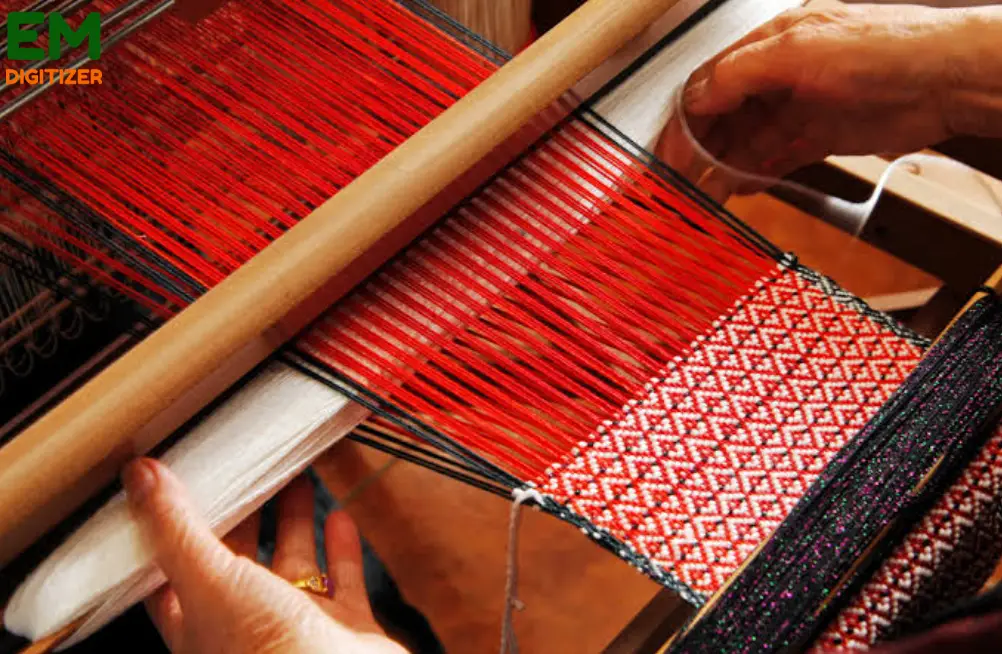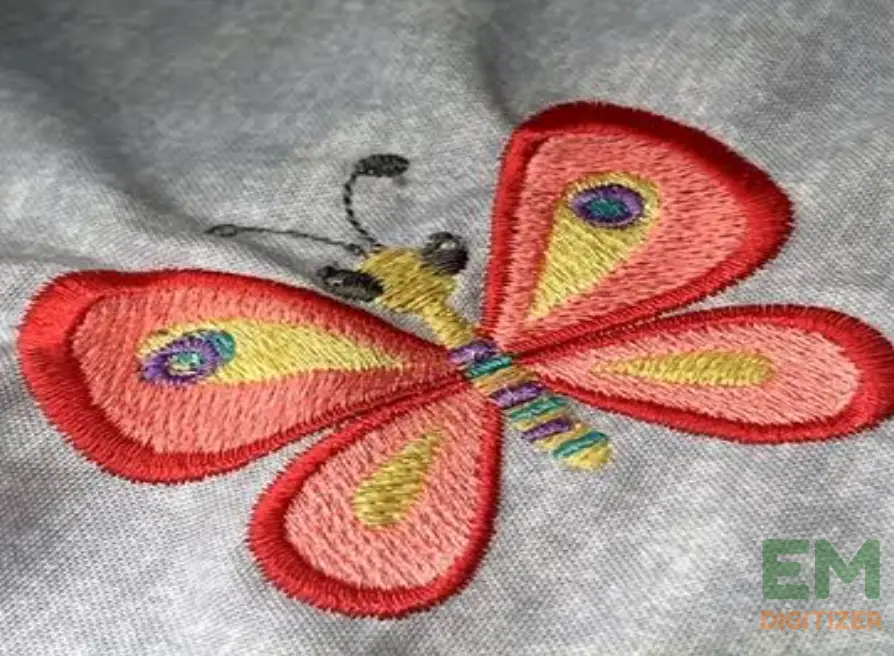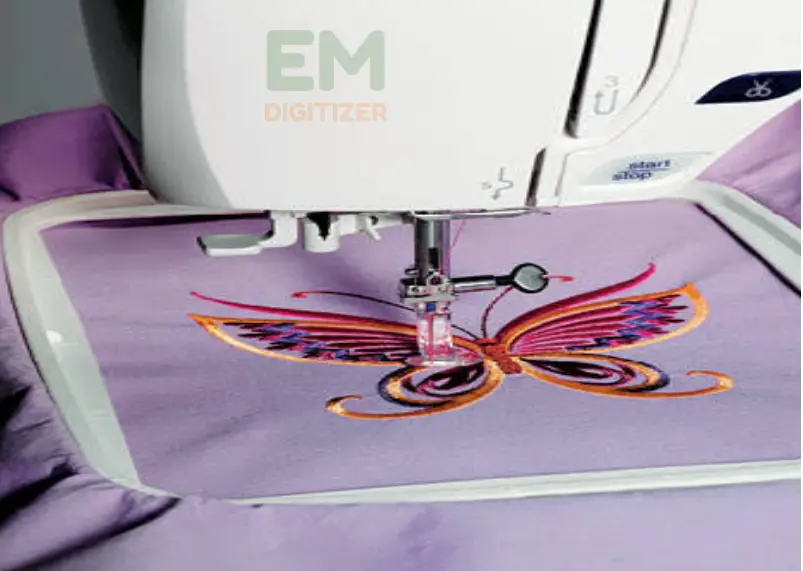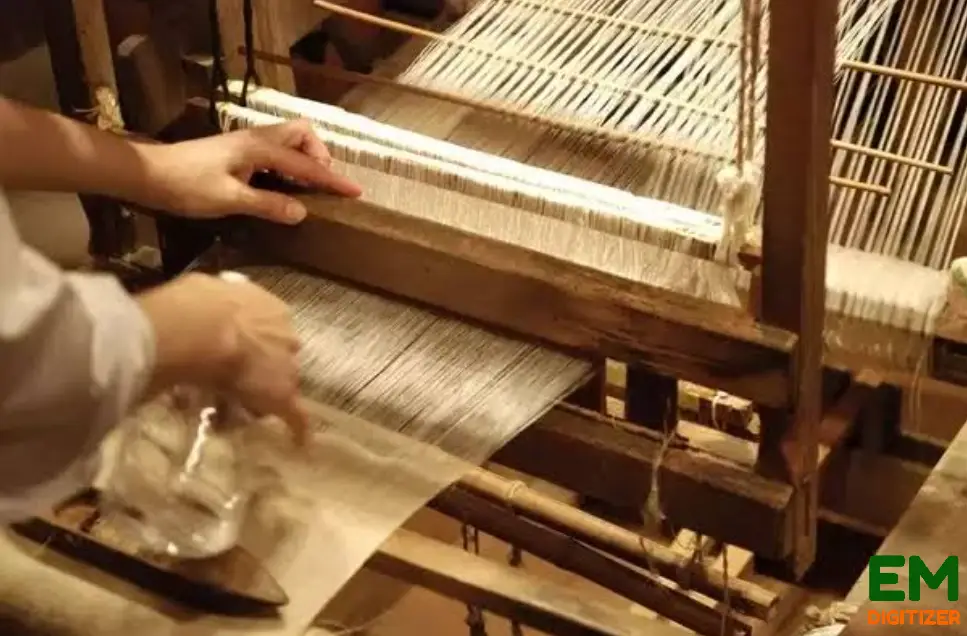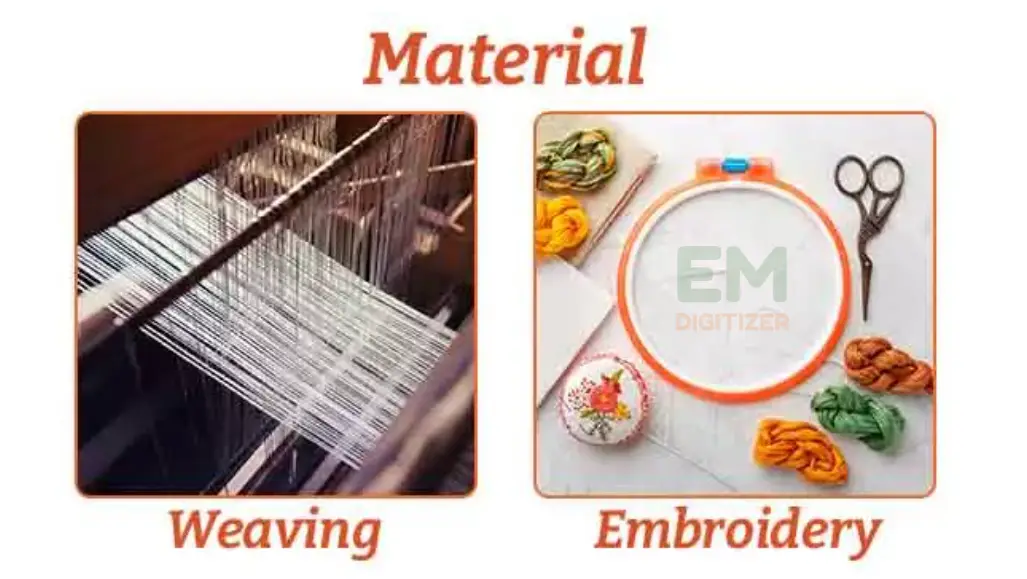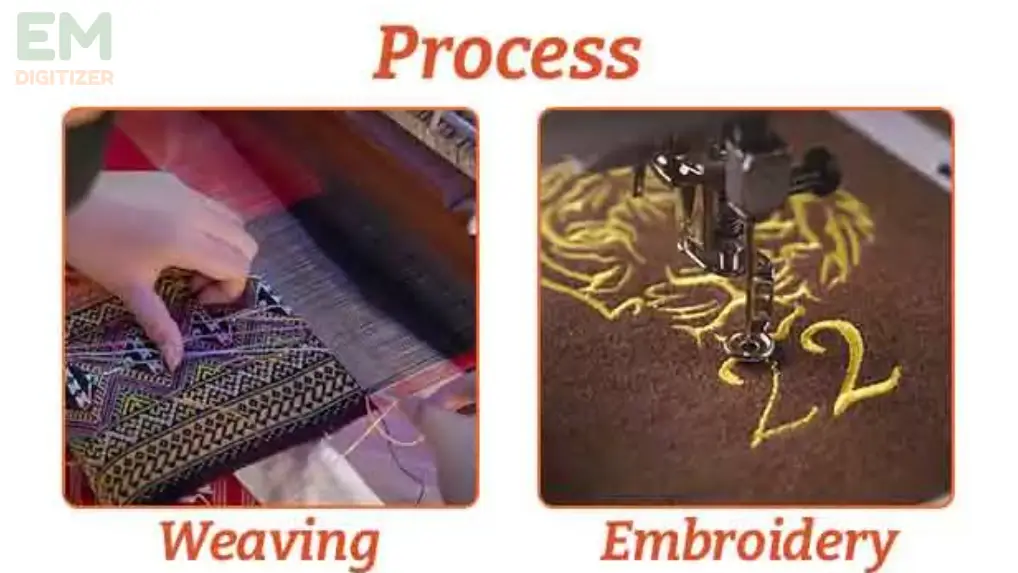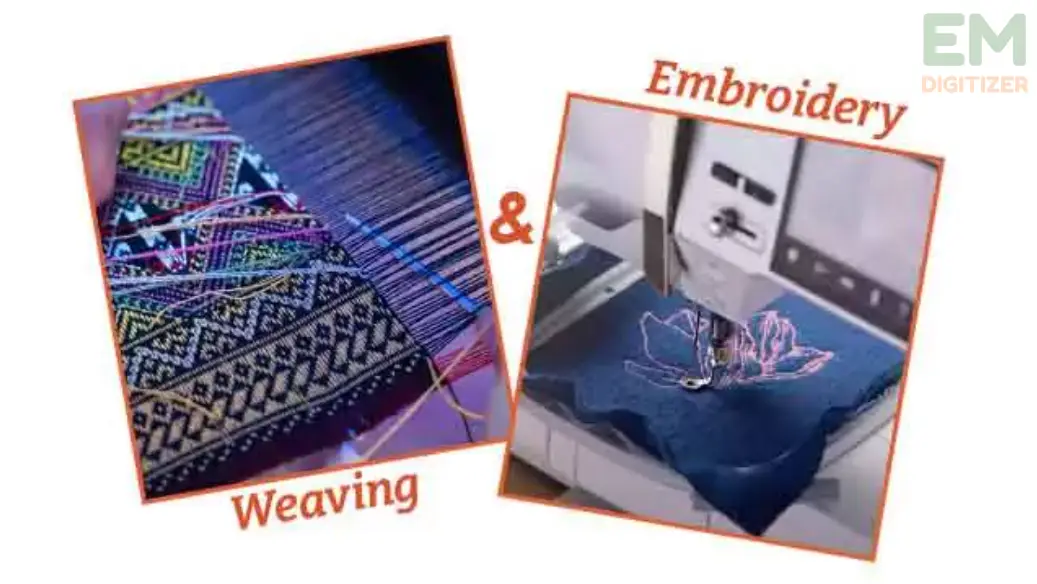Explain the Difference Between Weaving And Embroidery
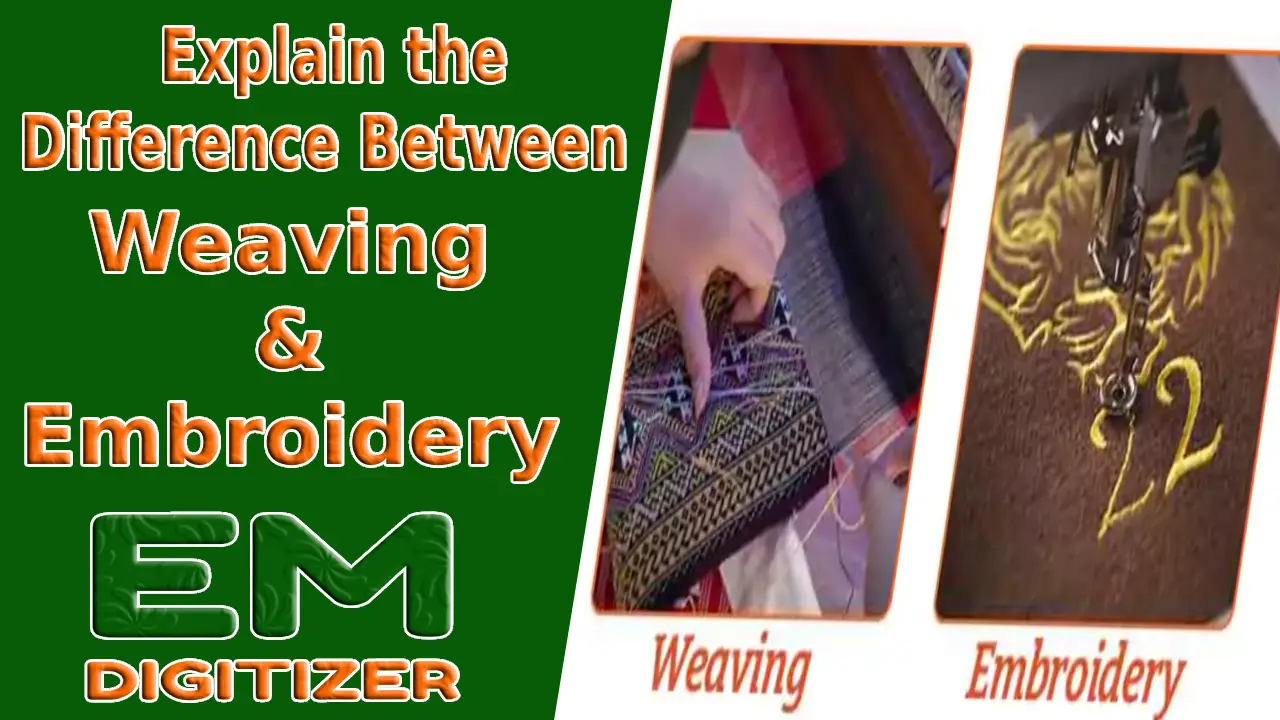
These are two very old ways of making things with threads and fabric. They are important in our history and culture.
Even though they both use floss and fabric, they are different in how they work and what they are for. In this blog, we will explain the difference between weaving and embroidery and appreciate the art in both of them.
If you are looking for embroidery digitizing services, EMDigitizer is one of the best embroidery digitizing companies. Providing all types of embroidery digitizing Services. I recommend you try digitizing services.
Order NowGet Free QuoteWeaving:
It is a technique for creating cloth by interlacing threads. Imagine creating a checkerboard out of threads.
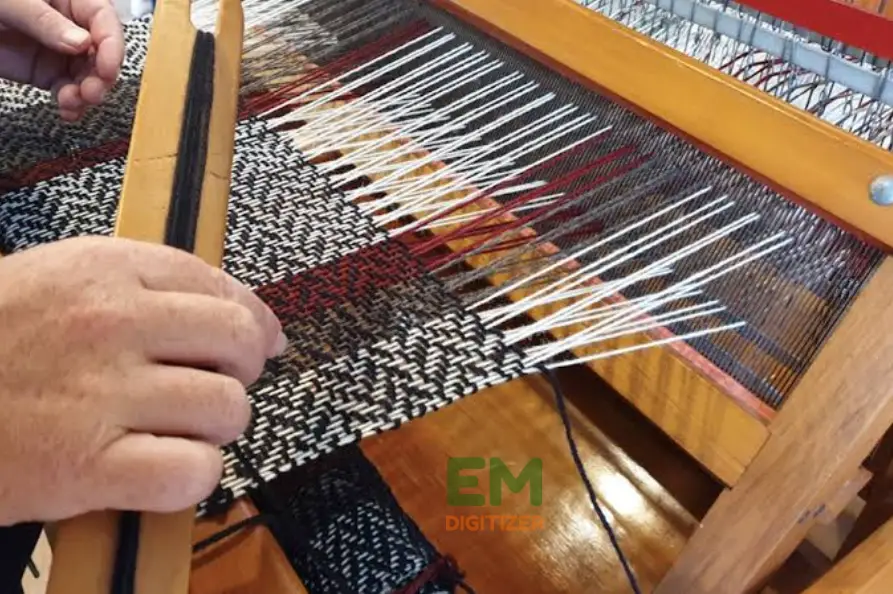
Let’s recall that weaving produces fabric from scratch, whereas embroidery involves adorning cloth that has already been created with attractive stitches. This will help to explain the difference between weaving and embroidery.
Here’s how it works:
- Imagine long threads going up and down on a frame, like the strings on a guitar. The “warp” refers to such threads. They remain still.
- Now, think of another thread that goes left and right, like when you’re sewing. We refer to this as the “weft.” The vertical warp threads are divided and rolled beneath.
- When all the warp threads have been covered, the weft thread crosses one over and beneath the next. A pattern is then formed when it then loops around in the other direction.
- A swatch of fabric is created during this in-and-out motion of threading a weft across the warp. It is possible to make a variety of attractive design patterns with threads in various shades and styles.
Clothing, blankets, and a variety of other items can all be made from this fabric. It’s like combining threads to put together a helpful puzzle.
Overview Of Embroidery:
To explain the difference between weaving and embroidery, remember weaving is like making a canvas, and embroidery is like painting a picture on it.
It’s like drawing pictures on cloth with thread using a machine instead of pencils or paint.
This comprehensive blog will teach you all the essentials of machine embroidery so you can master this skill.
Here’s how embroidery works:
- First, you need a design or pattern that you want to embroider. This can be a picture or any design you like. It’s usually created on a computer and saved in a format the embroidery machine can understand.
Browse this link to learn all about the machine embroidery file formats provided.
- Then, place the piece of fabric that you want to embroider on in a special hoop. The hoop holds the fabric tightly so that the machine can stitch on it without any wrinkles.
- Next, set up the embroidery machine. You need to choose the right colors of thread for your design and load them onto the machine.
The machine also needs to know where to start the embroidery, which is usually marked on the fabric.
- Once everything is ready, press a button, and the machine starts embroidering. It follows the design, moving the hoop around. And then stitch the pattern using the chosen thread colors. It’s a bit like a robot sewing.
- After the machine finishes the design, you may need to trim any extra threads. This makes the embroidered piece look neat.
This technique is commonly used for decorating clothes, hats, bags, and even home textiles like towels and pillowcases.
For step-by-step guidelines about embroidering a pillowcase, visit this blog.
Explain The Difference Between Weaving And Embroidery:
Several factors can be used to explain the difference between weaving and embroidery such as process, supplies, design freedom, texture, application, manufacturing process, etc.
Understanding these factors helps highlight the distinctions between weaving and embroidery and their respective roles in the world of textiles and fabric production.
Historical Background:
Let’s dive into the history of these methods to see how they’ve changed over time. To explain the difference between weaving and embroidery in their history, let’s start with weaving.
Thousands of years ago, people first started weaving. People used to weave fabrics by hand, but as time went on, machines like looms made it faster.
Machine embroidery is a newer thing that shows how technology has advanced. Instead of people making complex patterns by hand, computers control machines to make detailed designs on fabric.
So, when we look at the history, weaving is ancient, and machine embroidery is a modern marvel that highlights how far we’ve come in textile craft.
Required Tools:
To explain the difference between weaving and machine embroidery, we need to look at what they use to make things.
Utilizing specific tools called looms, weaving has been practiced for eons. These looms help make fabric by interweaving threads around.
Machine embroidery tends to be more trendy and makes use of computerized equipment. Using particular needles and software programs, they produce tricky fabric designs.
Techniques:
In this section, I will explain the difference between weaving and embroidery in this article as two unique textile methods with multiple uses.
Weaving is a way to make cloth. It uses two sets of threads, one up and down and one side to side. These threads are weaved on a loom.
When you’re done, you get a fabric with a neat pattern. Weaving is like making a pattern by crossing threads over and under each other in a careful order.
In contrast, embroidery is a form of decoration that involves decorating an area of a fabric with different motifs and threadwork.
Learn how to use different embroidery stitches in various tasks.
Unlike weaving, embroidery adds complex artwork, patterns, or images to an underlying fabric to make it more beautiful.
This technique allows for great artistic expression and creativity because it requires the creation of detailed and radiant ornaments working with multiple stitch types, such as satin, chain, or cross-stitch.
To learn all about cross stitch embroidery and its amazing applications, visit this blog.
Texture And embellishment:
Let’s explain the difference between weaving and embroidery when it comes to how they feel and look:
Weaving, which you might see on old-fashioned looms, creates the actual fabric by weaving threads together, giving it a unique texture as the threads crisscross. This texture is part of the fabric itself.
To learn more about the best machine embroidery thread and its applications, click here.
However, machine embroidery is mainly related to using computers and tools to add fancy motifs to already present textiles.
In embroidery, the texture mostly refers to the way the threads lay on fabric in order to produce a designed area that looks raised.
Applications:
It’s important to explain the difference between weaving and embroidery in terms of what they produce. Weaving, as was previously said, is the process of putting up threads to form fabric.
Embroidery adds decorative designs to existing textiles. When considering applications, weaving is commonly employed for creating the base fabric used in clothing, upholstery, and curtains.
Whereas machine embroidery improves these fabrics by including complex designs. To add aesthetic or decorative value to clothing, linens, and other goods, embroidery is frequently employed as a decoration.
Read this blog for the most comprehensive details about embroidery fabric.
Conclusion
I hope you gain enough insight to explain the difference between weaving and embroidery. Simply put, weaving is an ancient technique for creating fabric by tying up yarns manually or with the aid of a machine.
Machine embroidery, though, is a newer method that uses computer-controlled machines to make fancy designs on fabric.
Weaving is about making the fabric itself, while machine embroidery is about adding beautiful decorations. This shows how textile making has changed over the years.
If you already know enough about the difference between knitting and embroidery and are interested in it, we recommend a custom patch manufacturer.
They have their factory and control the quality. Not only do they sell to the public with free shipping, but the quality of their products is guaranteed. You can also have the custom patches made by providing them with your design. They can display any of your ideas on the patch for you.
You can also use custom patches to decorate items such as your book bag and hat. This will make your bag look more beautiful and unique. Let’s customize the patches together.
Yes, it’s possible to weave a fabric first and then add embroidered designs to it. Combining the two techniques can produce extremely complex and one-of-a-kind textiles.
A woven product could be a cotton shirt, while an embroidered product could be a denim jacket with intricate floral embroidery on the back.
Yes, several countries have a long history of weaving and embroidering, and each one has its own distinctive aesthetics, designs, and cultural meanings.
In contrast to needlework, which uses needles, floss, and frequently a hoop for stability, weaving needs the use of a loom, a bigger and more complicated form of apparatus.
If you have any questions leave the comments or you can visit our social channels for more updates regularly. We provide embroidery digitizing services if you need digitizing services feel free to contact us or email us.
